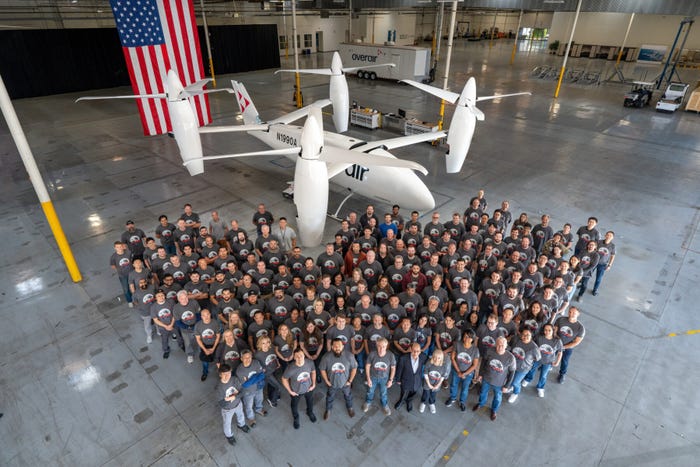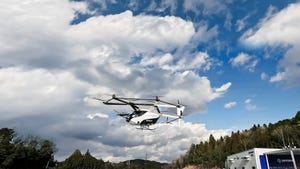Flying Taxi Company Starts Testing; Deal with Dallas AirportFlying Taxi Company Starts Testing; Deal with Dallas Airport
The blade control technology reduces vibration and propeller loads to provide smoother riding

A California eVTOL (electric vertical takeoff and landing) startup completed its first full-scale prototype.
The Butterfly electric aerial vehicle (EAV) by Overair in Santa Ana, California, now moves to the vehicle-level testing phase starting in 2024.
The EAV uses optimum speed tilt rotor (OSTR) and individual blade control (IBC) technologies.
The tilt rotor technology varies propeller rpm to increase efficiency while ascending and forward flight phases reduce power demand at hover by 60%, according to the company.
The blade control technology reduces vibration and propeller loads to provide smoother riding.
“Assembling our first full-scale prototype vehicle marks the culmination of years of industry expertise, meticulous development planning, innovative engineering and the hard work of the entire Overair team,” said Ben Tigner, Overair CEO. “This seamless transition from propulsion testing to a full-scale prototype underscores our dedication to redefining the eVTOL landscape with safer, quieter and more reliable aircraft.”
The Butterfly has four oversized rotors, significantly larger than typical eVTOL vehicles, and is designed to carry a pilot, five passengers and luggage.
Target markets for the EAV include passenger travel, medical, cargo and military applications.

Overair employees celebrate the completion of their first full-scale prototype. Credit: Overair
Overair, which was spun out of Karem Aircraft in 2020, has partnerships with the Dallas Fort Worth Airport, the city of Arlington, Texas and Jeju Island, South Korea.
The DFW partnership includes conducting a feasibility assessment for integrating passenger eVTOL operations across the North Texas region. Overair also has partnerships with Hanwha Systems and Bristow Group.
Overair completed its full-scale propulsion technology in a truck-based test in 2022.
The next set of testing includes flight control mechanics, safety features, operational efficiency and performance across diverse flight and weather conditions.
Like what you've read? For more stories like this on flying cars and emerging technologies, sign up for our free daily email newsletter to stay updated!
Read more about:
Flying CarsAbout the Author
You May Also Like






